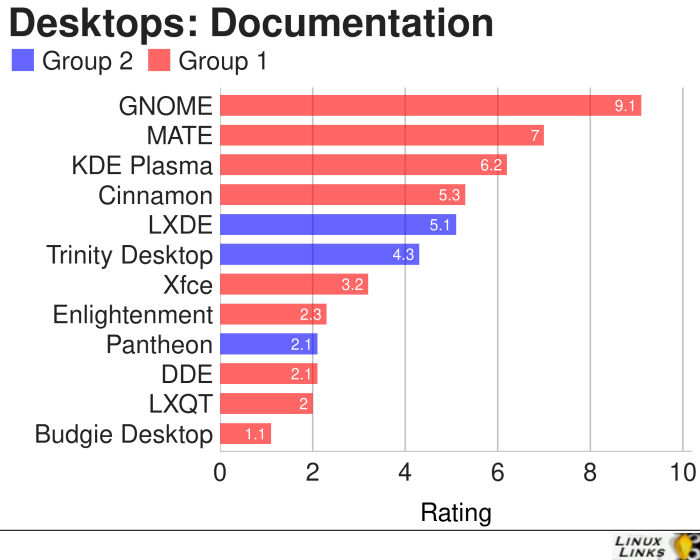Last Updated on May 27, 2022
Documentation & Support
DEs are often large and complex systems. They need some experience to master. Good DEs offer official documentation.
Unless you’re one of those bury your hand in the sand types, you’ll appreciate that documentation is generally awful, people hate writing it, and if anyone criticizes the lack of good documentation for software, wait for the tired retort, “Why don’t you write some documentation then?” Of course, end users wanting to learn about unfamiliar software are not good candidates to write the documentation.
Pantheon is designed by the Elementary OS distribution. There isn’t a dedicated website for Pantheon, but the distro’s website offers the reader a basic outline covering the panel and the dock. There’s a brief introduction to some of the desktop’s features including indicators, hot corners, and workspaces. Scant information only.
TDE’s website provides useful information. There’s a fairly detailed FAQ which explains how to use the panel, desktop, window manager, file manager, and how to configure the environment. There’s some useful tips with more in the Documentation section which offers a container of tips and tricks invoked by users. But it’s still pretty woeful.
LXDE’s wiki offers users better fare. There’s reasonable coverage of the various components of the DE, as well as its accessories, system tools, and configuration tools. In total, the wiki has 56 pages.

Next page: Page 6 – Development / Closing Thoughts
Pages in this survey:
Page 1 – Features
Page 2 – User Experience
Page 3 – System Resources
Page 4 – Extensibility
Page 5 – Documentation & Support
Page 6 – Development / Closing Thoughts
Learn more about the features offered by each desktop environment. We’ve compiled a dedicated page for each desktop environment explaining, in detail, the features each offers together with screenshots.
| Desktop Environments | |
|---|---|
| Pantheon | Showcasing the elementary OS |
| LXDE | Desktop environment with low resource requirement |
| Trinity Desktop | Qt3-based KDE 3.x form traditional computer desktop that is responsive |

I consider myself to be a power-user and use openSuse Leap 42.3 on my main workstation (HP xw8400) and prefer KDE Plasma for it’s configurability.
For my various laptop/netbook devices I settled on Lubuntu a couple of years ago because LXDE seemed to be lighter and faster than Xubuntu’s XFCE. Lubuntu 18.04 runs pretty much the same on my Acer One 110 Netbook, a Dell Inspiron 1300 and even a 12 year old Apple 13″ MacBook. That means I only need to keep up with 2 desktop environments. The one thing it lacks is a proper 2 panel file manager. I use Konqueror on openSuse which is IMHO the very best file manager around.
I agree with your view of LXDE, and would definitely recommend it, especially for older equipment and for Linux newbies.
As to TDE I only have one comment. It was designed for those who couldn’t drag themselves away from KDE 3.5! So obviously it has a more old fashioned look and feel. I did try it for a while as I needed Quanta+ for webdesign, but that now works fine on KDE 4.x so I left it behind.
Thanks for these interesting and informative reviews.
though LXDE is pretty much dead, I still enjoy the days when I ran LXLE as my main distro…
This comment was removed because it broke the rules. We don’t allow external links in comments. Explain.
To suggest an open source program, please complete this form.